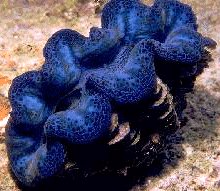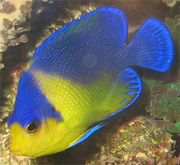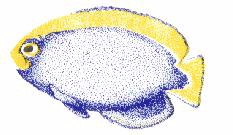|
Tridacna maxima

Gerald Heslinga Photo
Maxima and Crocea clams are the most popular
for the home aquarium.They have the richest
colors and the most vivid patterns and are
stunningly beautiful, especially when viewed from
above. They are further characterized by
the rows of fluting along the sides of their shell.
Despite their delicate appearance, they are
easily maintained. All Tridacna clams thrive with plenty of light. If you
ever get a chance to see how they respond to sunlight, you will better
understand just how much they love the light. For the brightest and fullest
colors, give them 4-8 watts of fluorescent light per gallon and place them
no deeper than 18" from
the light source. If you have metal halide
lights, give them 2-4 watts per gallon and locate them at least 8" below
the bulbs.
They prefer light to moderate water current
and do not need to be fed. Given the right lighting, they will thrive on
symbiotic zooxantellae algae. Maximas are fairly long-lived (over 10 years)
and grow quite quickly (2" per year when young). They will reach over 14"
in size in the wild.
Regular additions of calcium and strontium
are recommended to achieve good growth and color. Tridacna clams are capable
of some movement. They will turn on their foot to receive the amount of
current and light they want. When they are content with their location,
they will attach themselves to the site by means of byssus threads which
are secreted from the foot. Once the clam has attached itself, it is recommended
that you do not separate the clam from its attached base.
A healthy and content Maxima clam will fully
extend its mantle beyond the shell rim.
Thanks to Gerald
Heslinga and Harbor Aquatics
for the pictures
|












